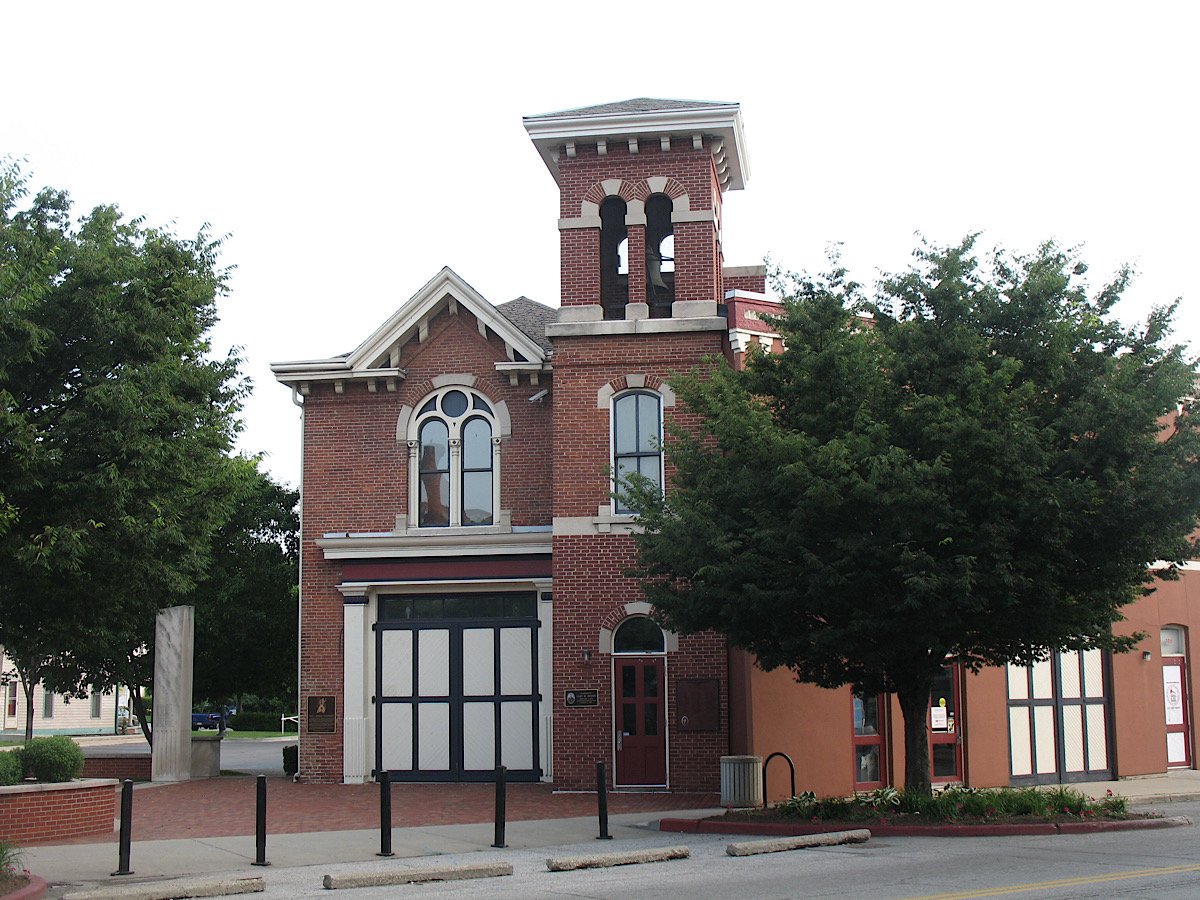Indianapolis firefighters have a keen sense of history. They are exposed to danger, injury, and death as they defend the people of the city from fires, and they become life-long friends with their co-workers in the fire stations. Many are deeply attached to the buildings where they have served and have a strong feeling for the historic fire houses and stations of Indianapolis.
The first four permanent fire houses of the Indianapolis Fire Department were built in 1870-72 on or near the four diagonal avenues of the Mile Square and featured two-story brick structures, with look-out towers and horse-drawn steam engines and hose wagons. Other fire houses of similar design were erected outside the Mile Square in the 1890s to serve the neighborhoods as the city expanded. Today, nearly all of the old two-story fire houses are gone. The principal reason: throughout most of the 20th century, the City of Indianapolis focused on improving fire safety by replacing older fire houses with new, one-story stations incorporating the latest fire-fighting equipment. Frequently the older stations would be demolished.
Fortunately, two of the oldest and most interesting of the historic fire houses downtown have survived and found sympathetic new uses. The original Fire Engine House No. 2 at 748 Massachusetts Avenue, one of the fire houses built in 1870-72, has been rescued by the firefighters themselves. Indianapolis Metropolitan Fire Fighters Union Local 416 purchased the structure in 1984, when it was in danger of demolition. The fire house had been abandoned by the city in 1932 and had been subsequently used by a variety of businesses, which had gutted it and removed its tower. Tom Hanify, now president of the Professional Fire Fighters Union of Indiana, was involved in the purchase and preservation of old No. 2. He says that the fire fighters acquired the building to save their heritage. They donated their labor to do much of the initial demolition work and site preparation, and provided equipment, memorabilia, historical photos, and other artifacts to create a museum on Indianapolis fire fighters. They also raised funds to reconstruct the missing features of the building, including the bell tower, and acquired a former livery stable next door. Today, the complex contains the museum, a Survive Alive program for teaching children how safely to escape from fires in their homes, offices for the Professional Fire Fighters Union, and meeting rooms for the union and neighborhood organizations. Brass poles have been re-installed in the old Fire House No. 2, and the hose roller on which the long fabric hoses used to be dried after fires has been restored. At the rear of the station is the former stable where the horses were kept, and the former hay loft above the stall area has been converted into a conference room. Outside, the fire fighter’s union has recalled the most poignant parts of its history by constructing a memorial to fallen Marion County Firefighters.
At 1030 East Washington Street stands probably the most authentic of the old firehouses in the city. The former Fire House No. 11, constructed in the 1890s, was acquired by Fred Abel and his business partners in 1971, after the city decommissioned it, and converted to use as Firehouse Color Photo Lab, Abel’s business. Abel says that the conversion was one of the first adaptive uses of historic fire stations in the city and was a good, central location for the photo lab. The building intrigued both his customers and employees with its architectural character and historical atmosphere. In 2003 Abel adapted the station again for Angie’s List, a company that rates service firms, as their headquarters. Working with Angie Hicks Bowman and Bill Oesterle of Angie’s List, he restored the original character of the interior. Now the marketing department occupies the old bunk room on the second floor, the captain’s room and former hay loft serve as conference rooms, and the firemen’s old lockers are used for storage. Angie Bowman says that the quirky spaces in the building fit the culture of a company like hers. The staff loves old buildings and enjoys the sense of preserving the heritage of the fire fighters who once lived there.
Next: Adaptive uses for other historic fire stations.

Museum of Indianapolis Firefighters, Massachusetts Avenue, 2010. James Glass
